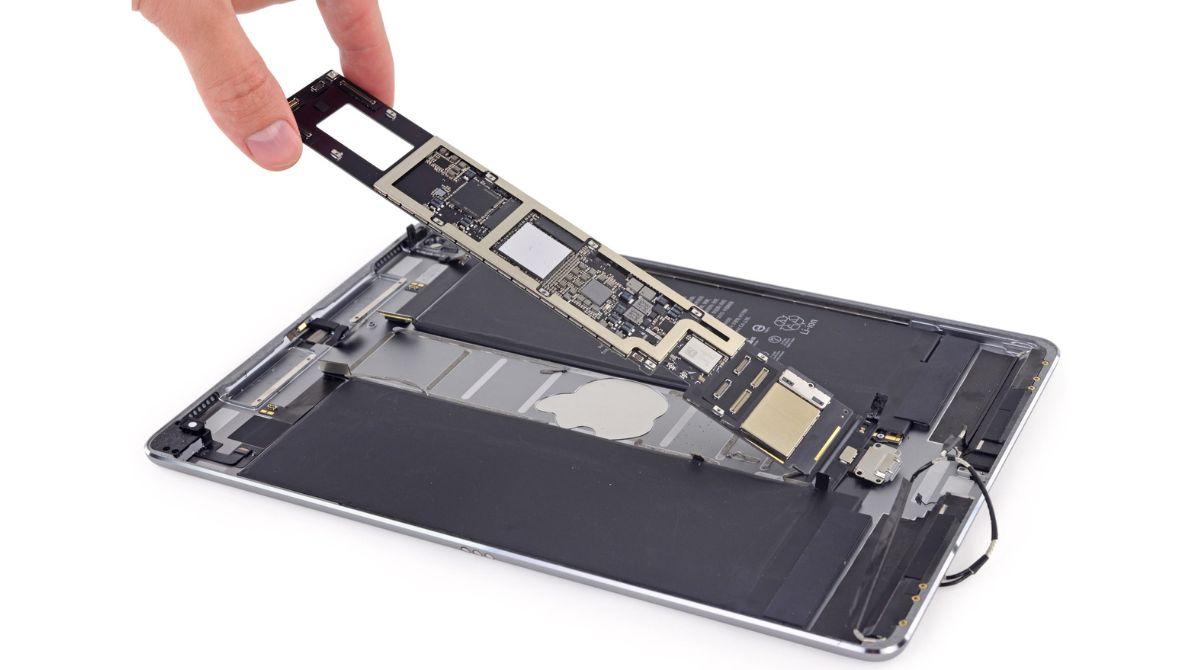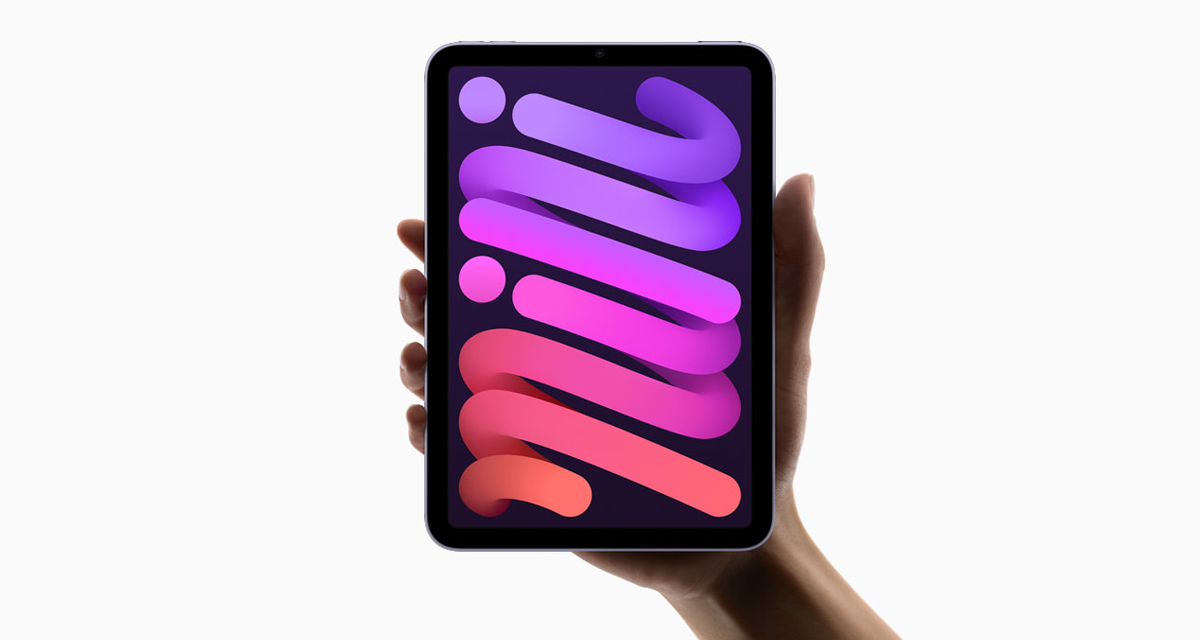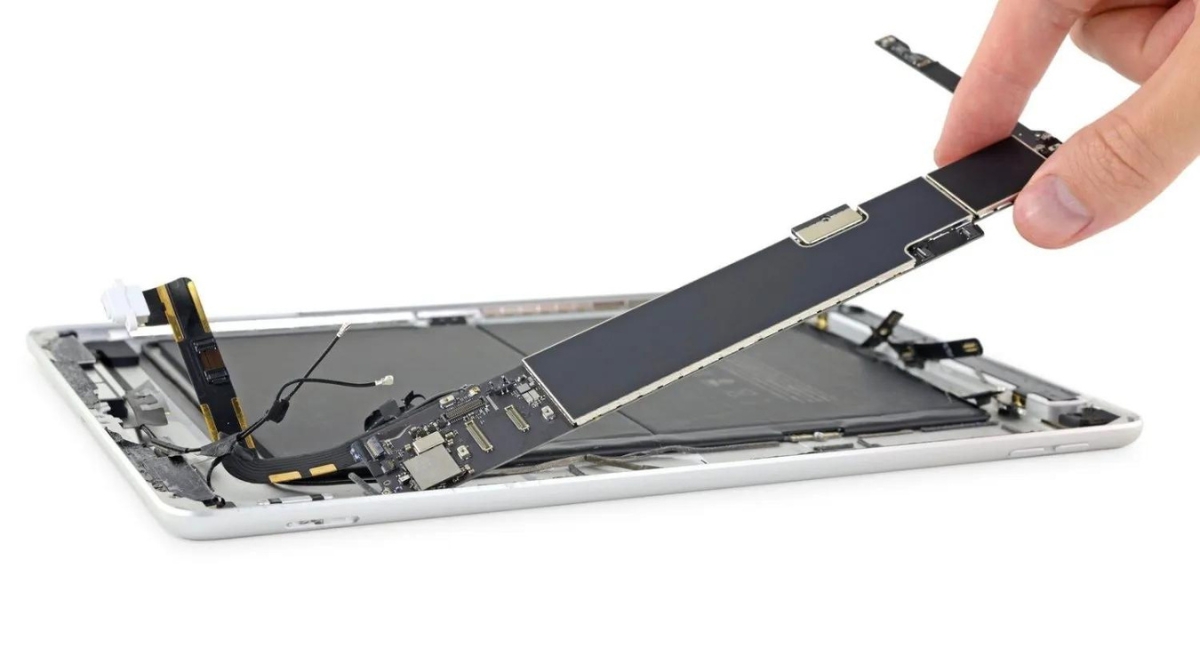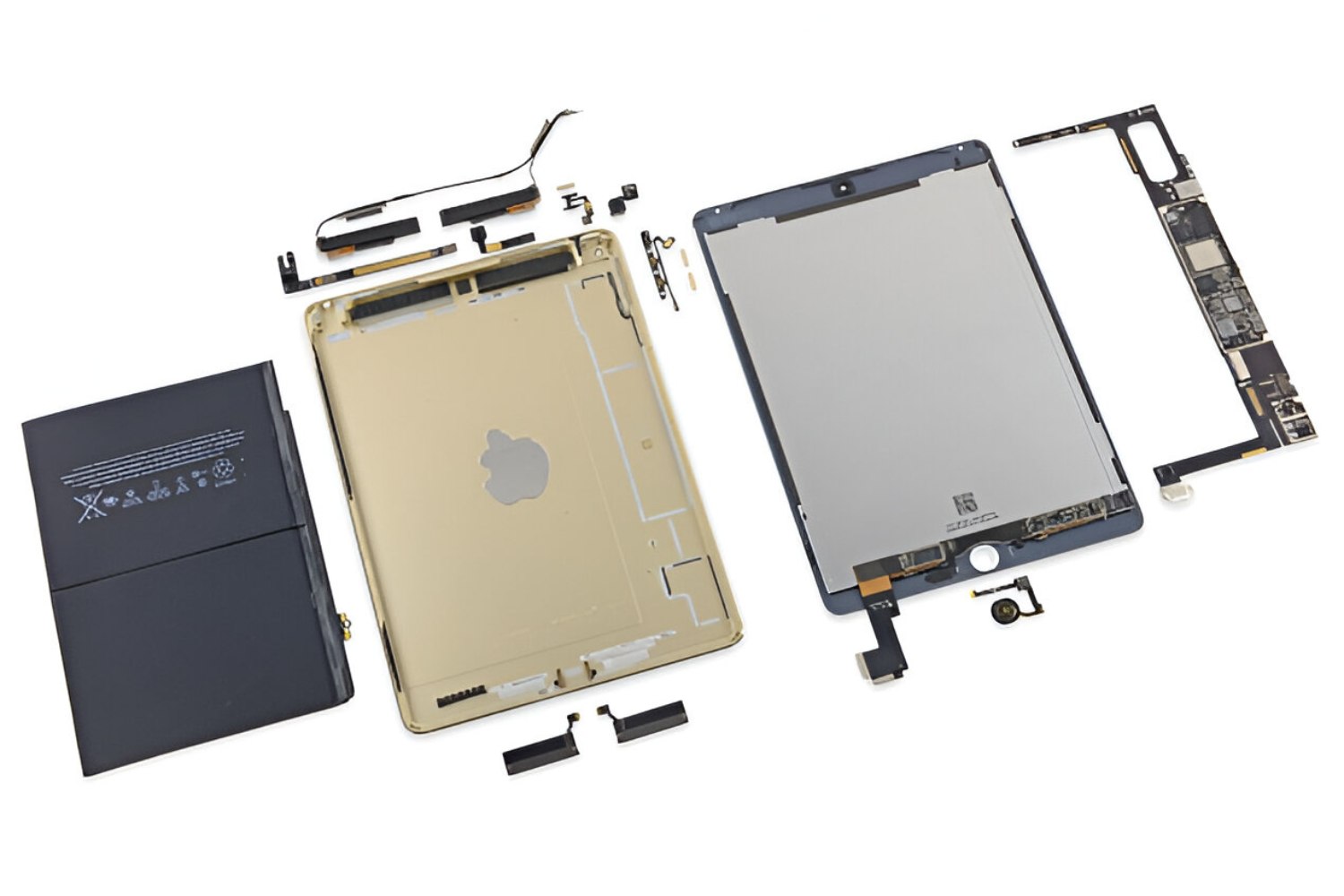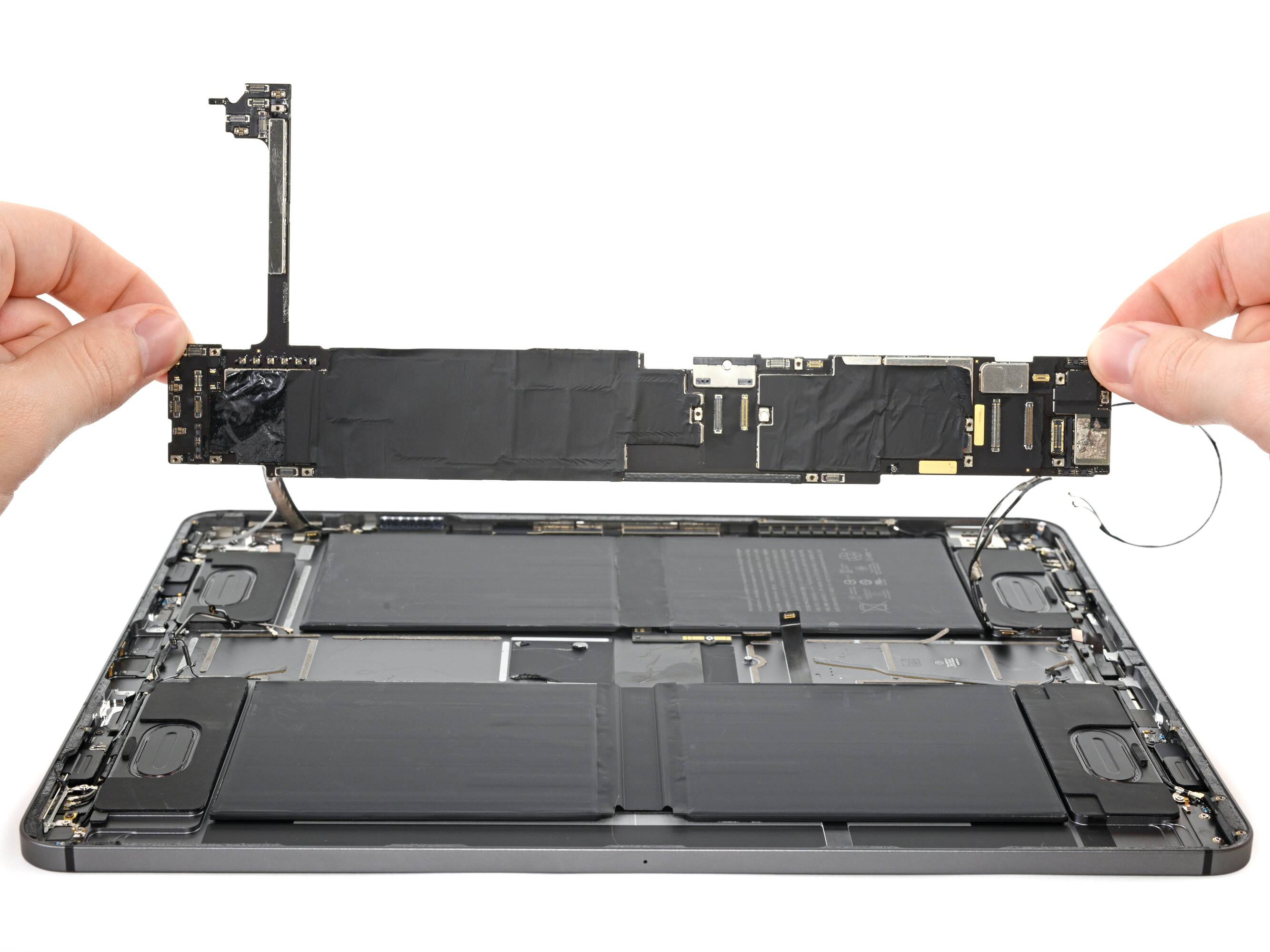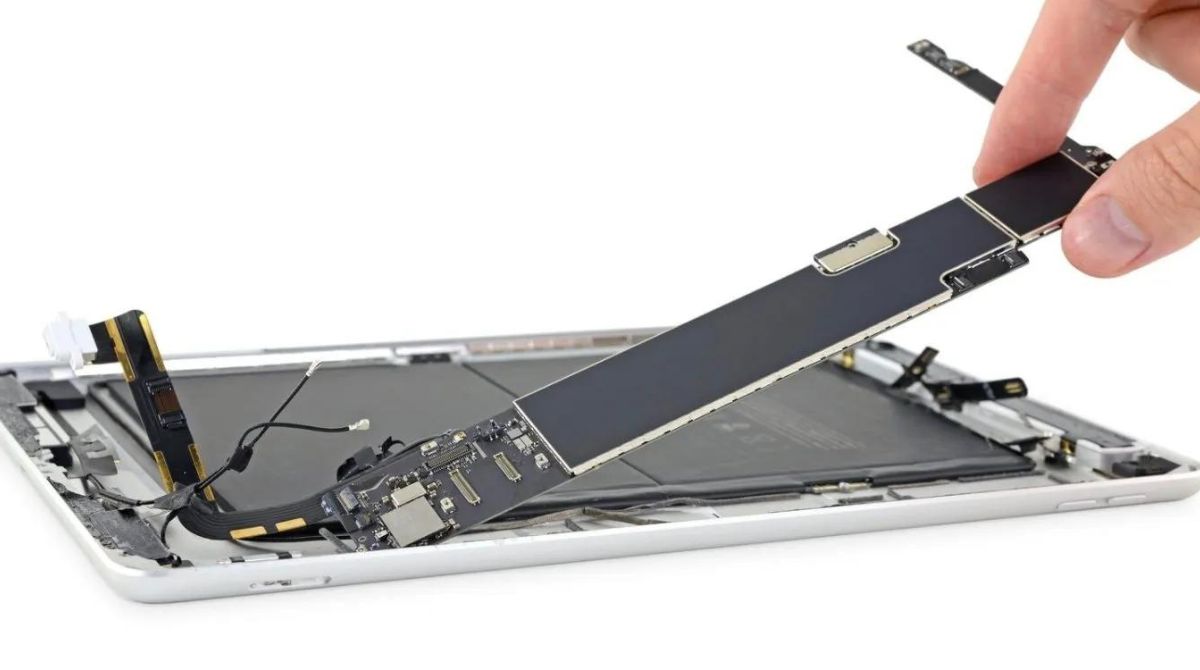Introduction
The iPad Pro has become a beloved device for professionals and creatives who need a powerful and versatile tool for their work. With its sleek design, stunning display, and impressive performance capabilities, the iPad Pro has set a new standard for what a tablet can be.
One crucial component that affects the performance of any electronic device is the RAM, or Random Access Memory. RAM plays a vital role in determining how quickly and efficiently a device can process data and handle multiple tasks simultaneously. Understanding the RAM capacity of the iPad Pro is essential for those looking to maximize their productivity and ensure smooth operation.
In this article, we will dive into the world of iPad Pro RAM and explore the impact it has on the device’s performance. We will discuss how RAM works, the RAM configuration of different iPad Pro models, and whether having more RAM is necessary for everyone. Whether you’re a professional using resource-intensive apps or a casual user simply seeking a smooth multitasking experience, understanding the RAM capabilities of the iPad Pro can help you make informed decisions about your device.
So, let’s take a closer look at the RAM in the iPad Pro and discover why it matters for your daily usage needs.
RAM in the iPad Pro
RAM, or Random Access Memory, is a critical component of any electronic device, including the iPad Pro. It is a volatile form of memory that stores data and instructions that the device’s processor can access quickly. Unlike long-term storage options like the internal storage or iCloud, RAM provides temporary storage for data that needs to be accessed frequently, allowing for faster processing and multitasking.
When you open apps, switch between tasks, or perform resource-intensive activities like photo editing or video rendering, the iPad Pro relies on its RAM to keep the necessary data readily available. The more RAM your device has, the more smoothly it can handle these operations.
RAM is responsible for keeping your device responsive and preventing it from slowing down when you have multiple apps running simultaneously. It enables the iPad Pro to switch between tasks quickly and efficiently, ensuring a seamless user experience, even when multitasking intensively.
Furthermore, RAM plays a significant role in the efficient functioning of RAM-dependent apps. Apps that require a large amount of memory, such as graphic design software or video editing applications, benefit from having more RAM available. With ample RAM, these apps can cache more data, resulting in smoother editing processes and faster rendering times.
Now that we understand the importance of RAM in the iPad Pro, let’s explore the different RAM configurations available in the various models of the iPad Pro lineup.
Understanding RAM
Before diving into the RAM configurations of the iPad Pro, it’s essential to have a basic understanding of how RAM works and its role in a device’s performance.
RAM is a type of computer memory that serves as temporary storage for data that the device’s processor can access quickly. It differs from long-term storage options like hard drives or solid-state drives (SSDs) because it is volatile – its contents are erased when the device is powered off or restarted.
When you open an app or perform a task on your device, the relevant data and instructions are loaded from the long-term storage into the RAM. This allows the processor to access the data quickly, resulting in smooth and responsive performance.
The size of the RAM determines how much data can be stored and accessed simultaneously. Having more RAM means your device can handle a greater amount of data without slowing down. This is particularly crucial for tasks that require a lot of memory, such as running multiple apps simultaneously or editing large files.
In addition to the size, the speed of the RAM also plays a role in the device’s overall performance. Faster RAM allows for quicker data transfer and retrieval, resulting in improved multitasking capabilities and faster app loading times.
It is important to note that RAM is different from the storage capacity of a device. Internal storage, such as the iPad Pro’s solid-state drive, is used for long-term storage of files, apps, and operating system data, while RAM is used for temporary storage during active tasks.
Understanding the basics of RAM and its role in a device’s performance helps us appreciate the importance of sufficient RAM capacity in the iPad Pro. Now, let’s explore the specific RAM configurations available in the different iPad Pro models.
The Role of RAM in Performance
RAM plays a crucial role in determining the performance of a device, including the iPad Pro. It directly impacts how smoothly and efficiently the device can handle tasks and process data. Here are some key ways in which RAM impacts performance:
1. Multitasking: Having sufficient RAM allows the iPad Pro to handle multiple tasks simultaneously. When you switch between apps or perform multitasking activities like split-screen or slide-over, the device needs to keep the relevant data accessible for quick retrieval. With ample RAM, the iPad Pro can seamlessly switch between tasks, minimizing lag and ensuring a smooth user experience.
2. App Performance: RAM availability directly affects how well apps function on the iPad Pro. Apps that require a significant amount of memory, such as image editing software or video rendering tools, can benefit from having more RAM. With more RAM, these apps can keep more data cached, resulting in faster rendering times, smoother editing processes, and overall improved app performance.
3. Overall Speed and Responsiveness: Adequate RAM capacity ensures that the iPad Pro operates at an optimal level. When the RAM is full, the device may need to offload data to the storage drive temporarily, leading to slower performance. With more RAM, the iPad Pro can keep a larger portion of active data readily available, reducing the need for constant data swapping and enhancing overall speed and responsiveness.
4. Future-proofing: As apps and operating systems become more demanding in terms of resource requirements, having ample RAM ensures that the iPad Pro remains capable of handling future updates and advancements. Investing in a device with more RAM can help extend its longevity and ensure it remains capable of meeting your needs for a longer period.
The role of RAM in performance cannot be overstated. It allows the iPad Pro to handle resource-intensive tasks, maintain smooth multitasking capabilities, and deliver a responsive user experience. Now, let’s explore the specific RAM configurations available in different models of the iPad Pro.
How Much RAM Does the iPad Pro Have?
The amount of RAM in the iPad Pro varies depending on the model and release year. Apple has been known to upgrade the RAM capacity with each new iteration to accommodate the increasing demands of apps and enhance overall performance. Let’s take a look at the RAM configurations of the latest iPad Pro models.
The iPad Pro 11-inch (2020): The 11-inch iPad Pro (2020) is available in two different RAM configurations. The base model comes with 6GB of RAM, while the higher-end model offers a generous 8GB of RAM. The increased RAM allows for smoother multitasking, improved app performance, and better overall responsiveness.
The iPad Pro 12.9-inch (2020): The larger 12.9-inch iPad Pro (2020) also offers two RAM configuration options. The base model comes equipped with 6GB of RAM, while the top-tier version boasts an impressive 8GB of RAM. This increased RAM capacity ensures seamless multitasking, efficient app performance, and a speedy user experience.
It’s worth noting that the RAM capacity of the iPad Pro models has remained consistent across different storage configurations. Whether you choose the base storage option or opt for higher capacities, the RAM remains the same. This means that the benefits of increased RAM apply regardless of the storage size you choose.
While the iPad Pro’s RAM configurations may seem modest compared to other devices, it’s important to remember that Apple’s optimization of hardware and software results in efficient utilization of available resources. Even with relatively lower RAM capacities compared to some laptops or desktop computers, the iPad Pro delivers impressive performance thanks to its integration with iPadOS.
Now that we know how much RAM the iPad Pro models offer, let’s delve into how iPadOS manages RAM to provide a seamless user experience.
The iPad Pro 11-inch (2020) RAM Configuration
The iPad Pro 11-inch (2020) model comes in two different RAM configurations, catering to different user needs and preferences. Let’s take a closer look at the RAM options available for this particular iPad Pro model.
Base Model:
The base model of the iPad Pro 11-inch (2020) is equipped with 6GB of RAM. This configuration provides ample memory for most users’ tasks and ensures smooth multitasking capabilities. With 6GB of RAM, you can seamlessly switch between apps, run demanding applications, and tackle resource-intensive tasks without experiencing significant performance slowdowns.
Top-Tier Model:
The top-tier model of the iPad Pro 11-inch (2020) offers a more generous RAM configuration of 8GB. This increased RAM capacity provides even greater performance and multitasking capabilities. Users who frequently engage in demanding tasks such as video editing, 3D modeling, or running multiple intensive applications simultaneously will benefit from the additional 2GB of RAM.
The increased RAM in the top-tier model allows for smoother rendering processes, faster app loading times, and improved overall responsiveness. It provides a buffer for data caching, ensuring that frequently accessed information remains readily available, resulting in a more efficient and enjoyable user experience.
It’s important to note that the RAM configuration does not affect the base storage capacity of the device. Users can choose different storage options, such as 128GB, 256GB, 512GB, or 1TB, while the RAM remains consistent within each configuration.
With the iPad Pro 11-inch (2020) offering two RAM options, users have the flexibility to choose a configuration that suits their specific needs and budget. Whether you opt for the base model with 6GB of RAM or the top-tier model with 8GB of RAM, both configurations deliver impressive performance and multitasking capabilities.
Now that we’ve explored the RAM configuration of the iPad Pro 11-inch (2020), let’s move on to the RAM configuration of its larger counterpart, the iPad Pro 12.9-inch (2020).
The iPad Pro 12.9-inch (2020) RAM Configuration
The iPad Pro 12.9-inch (2020) model also offers two different RAM configurations to accommodate varying user needs and demands. Let’s explore the RAM options available for this larger iPad Pro model.
Base Model:
The base model of the iPad Pro 12.9-inch (2020) is equipped with 6GB of RAM. This configuration provides a solid foundation for multitasking and ensures smooth performance for most tasks. With 6GB of RAM, you can comfortably switch between apps, run productivity software, and engage in creative endeavors without experiencing significant performance bottlenecks.
Top-Tier Model:
The top-tier model of the iPad Pro 12.9-inch (2020) boasts an impressive 8GB of RAM. This increased RAM capacity allows for even more power and efficiency, especially for users who frequently engage in resource-intensive activities. Whether you’re editing high-resolution videos, working with complex designs, or running multiple demanding applications simultaneously, the additional 2GB of RAM ensures smooth operation and minimizes any performance lag.
The enhanced RAM in the top-tier model of the iPad Pro 12.9-inch (2020) enables faster rendering, quicker app launches, and improved overall responsiveness. It provides ample headroom for caching data, keeping frequently accessed information readily available, and reducing the need for data retrieval, resulting in a faster and more efficient user experience.
Similar to the RAM configuration of the 11-inch iPad Pro, the RAM configuration in the 12.9-inch model does not affect the base storage options. Users can choose from various storage capacities, including 128GB, 256GB, 512GB, or 1TB, while enjoying the consistent RAM configuration within each model.
By offering two RAM configurations, Apple caters to different user preferences, ensuring that both the base model and the top-tier model of the iPad Pro 12.9-inch (2020) deliver exceptional performance. Whether you choose the base model with 6GB of RAM or the top-tier model with 8GB of RAM, you can expect efficient multitasking, seamless app performance, and an overall responsive user experience.
Now that we’ve explored the RAM configurations of both the iPad Pro 11-inch (2020) and the iPad Pro 12.9-inch (2020), let’s take a look at how iPadOS manages RAM to optimize performance.
RAM Management in iPadOS
iPadOS, the operating system specifically designed for iPad devices, includes intelligent RAM management features to optimize performance and ensure smooth multitasking capabilities. iPadOS utilizes several strategies to efficiently manage RAM usage:
App Backgrounding:
iPadOS intelligently manages background processes to free up memory for active tasks. When you switch to a different app or minimize an app, iPadOS may temporarily freeze or limit the resources allocated to the background app, allowing for more efficient memory management.
Memory Compression:
iPadOS employs advanced memory compression techniques to minimize RAM usage. It compresses inactive data, such as app data, files, and system resources, to free up additional memory without compromising performance. This compression ensures that the available RAM is optimized and can be allocated to active tasks more effectively.
Priority Tasking:
iPadOS prioritizes memory allocation for foreground tasks, ensuring that the currently active apps and processes receive the necessary resources for smooth operation. This prioritization prevents excessive swapping of data between the RAM and storage, leading to improved performance and reduced latency.
Automatic Memory Management:
iPadOS also includes automatic memory management mechanisms that dynamically allocate and deallocate memory based on app usage and available resources. It intelligently adjusts RAM allocation to optimize the performance of the device, ensuring that the system operates efficiently at all times.
These RAM management techniques in iPadOS work seamlessly in the background to deliver a smooth and responsive user experience. With intelligent backgrounding, memory compression, priority tasking, and automatic memory management, iPadOS ensures that the available RAM is efficiently utilized, minimizing the possibility of performance bottlenecks caused by excessive RAM usage.
It’s worth noting that as a user, you don’t need to manually manage or optimize RAM usage in iPadOS. The operating system takes care of these processes for you, allowing you to focus on your work and tasks without worrying about performance issues.
Now that we understand how RAM is managed in iPadOS, let’s explore the relationship between RAM and multitasking on the iPad Pro.
RAM and Multitasking on the iPad Pro
The iPad Pro, with its powerful hardware and efficient software, is designed to handle multitasking seamlessly. The amount of RAM available on the device plays a crucial role in its multitasking capabilities. Let’s explore how RAM affects multitasking on the iPad Pro.
Smooth Switching Between Apps:
Having sufficient RAM enables the iPad Pro to switch between apps quickly and smoothly. When you have multiple apps running simultaneously, the device needs enough RAM to keep the relevant data for each app readily accessible. With ample RAM, the iPad Pro can seamlessly transition between apps, allowing you to work, communicate, and access information effortlessly.
Split-Screen and Slide-Over:
The iPad Pro’s multitasking features, such as split-screen and slide-over, allow you to use multiple apps at the same time. These features rely on RAM to keep the necessary data of each app active and accessible. With more RAM, the iPad Pro can smoothly run two or more apps side by side, enhancing productivity and enabling efficient multitasking.
Background App Refresh:
When you switch to a different app, the previous app may continue running in the background, performing tasks such as updating content or refreshing data. Sufficient RAM ensures that background processes can continue without impacting the performance of the active app. With more RAM, the iPad Pro can efficiently manage the resources allocated to both the foreground and background apps, resulting in a seamless multitasking experience.
Resource-Intensive Apps:
Certain tasks, such as video editing, graphic design, or 3D modeling, require a significant amount of memory. With more RAM, the iPad Pro can handle resource-intensive apps more effectively, allowing for smoother rendering, faster processing, and improved overall performance. The additional RAM ensures that the device doesn’t lag or slow down when running memory-intensive applications.
With its ample RAM capacity and efficient multitasking features, the iPad Pro excels in handling multiple apps and tasks simultaneously. Whether you’re using split-screen, slide-over, or running demanding applications, the iPad Pro’s robust hardware and optimized software work in tandem to deliver a seamless multitasking experience.
Now that we’ve explored the relationship between RAM and multitasking on the iPad Pro, let’s discuss whether more RAM is necessary for everyone.
Do You Need More RAM on the iPad Pro?
When considering the need for more RAM on the iPad Pro, it’s essential to assess your specific usage requirements and the nature of the tasks you regularly perform on your device. While having more RAM can certainly provide advantages, it may not be necessary for everyone. Here are some factors to consider:
Usage Scenarios:
If your usage mainly involves light productivity tasks, web browsing, email, and casual app usage, the base RAM configuration of the iPad Pro should be sufficient. Everyday activities like streaming media, social networking, and light gaming generally do not demand a significant amount of memory. In such cases, additional RAM may not provide noticeable improvements in performance.
Resource-Intensive Tasks:
On the other hand, if you frequently engage in resource-intensive tasks like video editing, 3D modeling, running virtual machines, or processing large datasets, having more RAM becomes beneficial. With increased RAM, the iPad Pro can handle these demanding tasks more efficiently, ensuring smoother processing, faster rendering, and overall improved performance.
Future-Proofing:
Consider your long-term usage needs and the expected advancements in apps and software. If you plan to keep your iPad Pro for several years and want to ensure it remains capable of handling future updates and resource-intensive applications, opting for the higher RAM configuration can help future-proof your device. It provides a buffer for upcoming demands and ensures longevity in terms of performance.
Budget Considerations:
It’s important to factor in your budget when deciding on the RAM configuration for your iPad Pro. Additional RAM comes at a higher cost, and if your budget allows, opting for more RAM can provide peace of mind and potential performance benefits. However, if you’re constrained by budget limitations and your usage doesn’t require extensive memory, the base RAM configuration will still deliver a satisfactory user experience.
Ultimately, the decision of whether to invest in more RAM on the iPad Pro depends on your individual needs, usage patterns, and budget. While more RAM can enhance multitasking, enable smoother performance, and future-proof your device, it may not be essential for everyone. Assessing your requirements and preferences will help you determine the optimal RAM configuration that strikes the right balance between performance and affordability.
Now that we’ve explored the need for more RAM on the iPad Pro, let’s wrap up with some final thoughts on the topic.
Final Thoughts
The RAM capacity of the iPad Pro plays a crucial role in its performance and multitasking capabilities. Understanding how RAM works and the impact it has on the device’s functionality is essential for making informed decisions about your iPad Pro purchase.
While the base RAM configurations of the iPad Pro models are sufficient for most users’ needs, those who regularly engage in resource-intensive tasks can benefit from opting for higher RAM configurations. More RAM allows for smoother multitasking, faster app performance, and improved overall responsiveness.
iPadOS, with its intelligent RAM management features, optimizes the available memory, ensuring an efficient and seamless user experience. The operating system dynamically allocates and reallocates resources, prioritizing active tasks, and freeing up memory where necessary.
When deciding whether or not you need more RAM on your iPad Pro, consider your specific usage scenarios, the nature of your tasks, and your budget. For light users, the base RAM configuration should suffice, while power users involved in demanding activities may benefit from additional RAM for improved performance and future-proofing.
Remember that the iPad Pro’s integration of hardware and software, along with Apple’s optimization efforts, delivers impressive performance even with relatively lower RAM capacities compared to traditional computers. The efficient utilization of available resources ensures that the iPad Pro remains a powerful and capable device for a wide range of tasks.
As technology evolves and app demands increase, having ample RAM becomes increasingly important. By understanding and considering your specific needs, you can make a well-informed decision regarding the RAM configuration of your iPad Pro, ensuring that it meets your present and future requirements.
With the right RAM configuration, your iPad Pro can deliver a seamless and efficient user experience, allowing you to maximize productivity and make the most of its powerful features.







